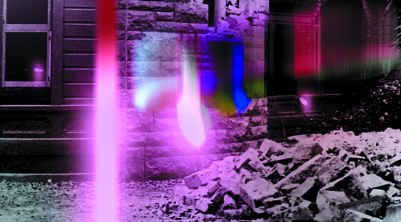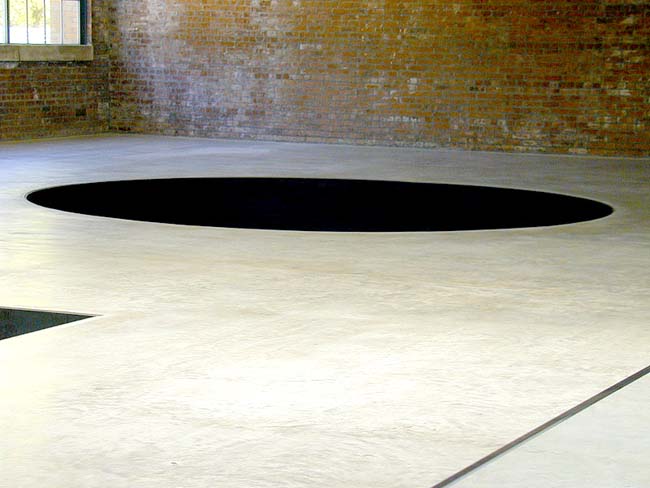Use an only-in-LA pickup line on the Observer‘s Alexandra Jacobs and be prepared to read about yourself after she gets back to NYC. That is, of course, if you even read a paper anymore, which you don’t.
In L.A. Mating Cry: IMDb Me!, Jacobs does her best George Gurley, and gets people to unload their most unwittingly unflattering selves to the media.
Tremble’s Guide to the NY Underground Film Festival
[via Gawker] Todd Levin gets all excited, then he gets all real about the program notes for this year’s New York Underground Film Festival. He has provided funny-because-it’s-true guide to interpreting the program and selecting your screenings wisely.
“‘…an ode to lights and color’
‘Even my closest friends and family will have second thoughts about attending this film.'”
and
“‘Vice Magazine presents:…’
Be prepared to laugh the meanest, most self-righteous laughs possible for about six minutes, and then hate yourself for the remaining 54 minutes.”
Lost in Transcription
A reader is looking for a transcript of Sofia Coppola’s Oscar acceptance speech. Any ideas? Does anyone still have that snoozer of a show on Tivo? Is it even possible to capture the ephemeral essence that is Sofia with mere words?
I remember her thanking Antonioni, and her father, “for telling me never to use video taps,” but I confess, I stopped transcribing her last fall.
Email me at greg at greg dot org with your suggestions. Thanks.

[Update: sheesh, that was fast. The transcript, minus the advice about video taps, is at the Oscars website. Since it’s about as long as her script for LIT, I post it here in its entirety:
Thank you. I can’t believe I’m standing here. Thank you. Thank you to the Academy for giving me this honor. Thank you to my dad for everything he taught me. Thank you to my brother Roman and all my friends who were there for me when I was stuck at 12 pages and encouraged me to keep writing. And the filmmakers whose movies — I have to breathe. The filmmakers whose movies inspired me when I was writing this script, Antonioni and Wong Kar-Wai and Bob Fosse and Godard and all the others. And every writer needs a muse. Mine was Bill Murray. Thanks to my mom for always encouraging us to try to make art, and thank you to Bart and Ross for helping make my script into a movie. And thank you to everyone at Focus. Thank you.
And thanks to my dad for telling me never to use video taps. Ahem.
Champ de Foudre

David F. Gallagher has moved his base of operations for his excellent photo-centric weblog, lightningfield.com, to Paris for a while. He thinks this’ll mean “fewer pictures of trash,” which is cute.
Anarchist guerilla cinema in Morocco
The Guardian has excerpts from the expat Spanish writer Juan Goytisolo’s Cinema Eden: Essays from the Muslim Mediterranean. In a memory straight out of the seedy phase of Cinema Paradiso, Goytisolo writes about packing into “fleapit” theaters in Barcelona, Tangier, and Marrakech, to watch kung fu movies with raucous crowds of semi-literate cinema junkies.
One film he remembers stands out: The Dialectic Can Break Stones, a Taiwanese chop’em up given the What’s Up, Tiger Lily? treatment by ’68-ist activists. Supposedly, some Maoist cinephiles acquired the (Moroccan?) rights to the film, replaced the subtitles with their own revolutionary storyline, and showed in to unsuspecting immigrant audiences. While pummeling his way through a roomful of evil bureaucrats, the hero would cry out, “Now you’ll find out about the muscle-power of a pupil of Nietzsche and Lou Andrea Salome!”
Hey, sounds more plausible than The Dreamers.
Guestblogging for God
What a post to follow Vincent Gallo. I just started a two-week guestblogging stint at Times and Seasons, a multifaceted group weblog about Mormon doctrine, living, culture and politics. Check it out, brothers and sisters.
Buy it and make something good with it
 [via Gawker] It’ll cost you, but this may be the closest you’ll get to a hummer from Chloe Sevigny. Director/actor/antagonist Vincent Gallo is selling his meticulously assembled and tuned film production package on ebay.
[via Gawker] It’ll cost you, but this may be the closest you’ll get to a hummer from Chloe Sevigny. Director/actor/antagonist Vincent Gallo is selling his meticulously assembled and tuned film production package on ebay.
According to the sale, Gallo designed and assembled and fine-tuned the package after Buffalo 66 and has shot 60,000 feet of film with it for Brown Bunny. According to Gallo,
The package would have to include everything needed to make the film: 2 cameras, a high quality and comprehensive lens collection, mobile yet sufficient lighting, sound equipment that could integrate with the cameras so as to avoid slating, a mic assortment that would never need backup, and a ton of extras that would meet the needs of his flexible and spontaneous production style, and last but not least, an extremely secure transportation case system.
The package also includes, remarkably, an “Angenieux zoom [lens] which was purchased from the Stanley Kubrick estate. It is the famous super long throw lens that Kubrick had made for Barry Lyndon. No other like it exists.”[12/04 update: actually, according to Ed diGiulio, who made the lens, they developed a prototype for Kubrick, but also built and sold several others as the Cine-Pro T9 24-480mm zoom lens.]
If the film’s credits are accurate, you can use this package to make a movie all by yourself. There are a couple of sound people listed, but otherwise it’s all Gallo, Gallo Gallo Gallo. No sign that he’s going to free his indentured tech servants as part of the deal.
Unlike critical response to Brown Bunny, Gallo’s ebay feedback is universally positive. He trades a lot of high-end audio equipment and pays very quickly. In 2001, Gallo dealt with an ebayer named Ian McKellen. We don’t know if that transaction involved a hummer, but Vincent did thank Ian for going “the extra mile.
Cantilever House
 !
!
Herbert Muschamp calls it a “stairway to heaven penthouse paradise,” which is odd, since it looks more like a zipper than a staircase. The zipper on the fly of lower Manhattan. [“Chicka-boom!” indeed, Herbert.]
What is it? It’s Santiago Calatrava’s latest project for New York, a 1000′ residential tower of cantilvered cubehouses on South Street. (yes, as in Seaport. NYC zoning laws now require super-luxury buildings to be built adjacent to cornball-laden malls.) Each cube will be a single 10,000 SF residence, with a 2,000 SF terrace on the roof of the cube below.
The form is based on sculptures Calatrava has been noodling with in his garage, and on technology used in the Turning Torso tower [left] he’s completing in Malmo, Sweden (aka the Jersey City of Copenhagen).
If all goes according to plan, this architectural marvel will sit across the East River from Jean Nouvel‘s 1999 cantilevered glass-floored hotel, and will overlook Frank Gehry’s cloud-like floating Guggenheim. Oh, downtown will become an architectural paradise at last. Somehow, I think we’ll see WTC Memorial Ice Rinks in the footprints before then.
Related [?]: “A New Twist” for getting around lower Manhattan–entirely underground
Talk-abouts: John Baldessari and Jeremy Blake in Artforum

Editor Tim Griffin introduces In Conversation, a new feature in this month’s Artforum, artists talking to artists. To start: Jeremy Blake and John Baldessari, two artists with deep interest in the intersections between painting and ______(cinema, photography, technology, text, conceptual art). Both artists also have deep, abiding interest in film as well, which explains why this turned up on daily.greencine.com.
One great thread: Baldessari’s contested label as a Conceptual Artist.
JOHN BALDESSARI: Well, in the late ’60s, I was introduced to some painter at Max’s Kansas City and he said, “Oh you’re one of those �write-abouts’?” I said, “What do you mean �write-abouts’?” ‘You know, critics write about your work.’ To him, that’s what made a Conceptual artist.
Related posts from Feb. 2003: Jeremy previewing his Winchester piece last Feb and his haiku-like shorts for the Punch-Drunk Love DVD.
Michael Arad Interview at Arch. Record
[via Archinect] WTC Memorial designer Michael Arad discusses his original idea, design process, and experience in a too-brief interview for Architectrual Record Magazine.

Arad’s reworked proposal (with Peter Walker) attempts a return to his original vision, in which very clear, stark voids pierce the horizontal plane of the plaza. More and more, the experience sounds similar to Michael Heizer’s Nort, East, South, West installation at Dia Beacon.
The WTC Films of Etienne Sauret at Film Forum
Two films by Etienne Sauret, including the eerie WTC: The First 24 Hours, [which screened on the program with my first film at MoMA’s Documentary Fortnight] are showing at Film Forum today through March 16. Etienne will introduce the films tonight at 6:15 and 8:00.
Mark Holcomb reviews them in the Voice and gets cranky about the FDNY. Stephen Holden reviews them more straightforwardly in the Times.
In the WTC Memorial Kitchen: Still Baking, Lots of Cooks
The NY Observer’s Blair Golson reports on conflict brewing around Michael Arad’s design for the WTC Memorial. Apparently, he doesn’t want to be the malleable vassal the Jury and the LMDC had in mind when they chose his proposal. Some accuse him of pursuing “unlimited control [over the Memorial design], without any checks on his responsibilities.” They also say Arad threatened to take his displeasures public to gain negotiating leverage. This, coming from an anonymous LMDC source involved in the rebuilding process.
Meanwhile, somehow, the Observer also learned of complaints by Arad’s original proposal team members, who say he hogged all the credit on their group design. Someone’s trying to make a point that Arad doesn’t play well with others.
Read the Village Voice. BE the Village Voice

Three for Three
If you want to win, just impart your filmmaking wisdom on greg.org
Congratulations to Oscar winners, Independent Spirit Award winners– and greg.org interviewees–Sofia Coppola and Errol Morris.
And don’t forget Dany Wolf and Gus Van Sant with their Palme d’Or from a little ‘burg called Cannes.
The Shoes of Errol Morris
Errol Morris, you just won an Oscar and an Indpendent Spirit Award. Where are you going next?
“I’m going to Nordstrom! Daddy needs a new pair of shoes.”

Buy Sperry Top-Sider ‘Stripers’ like the ones Morris wore to both award ceremonies– and our interview— at Nordstrom.
